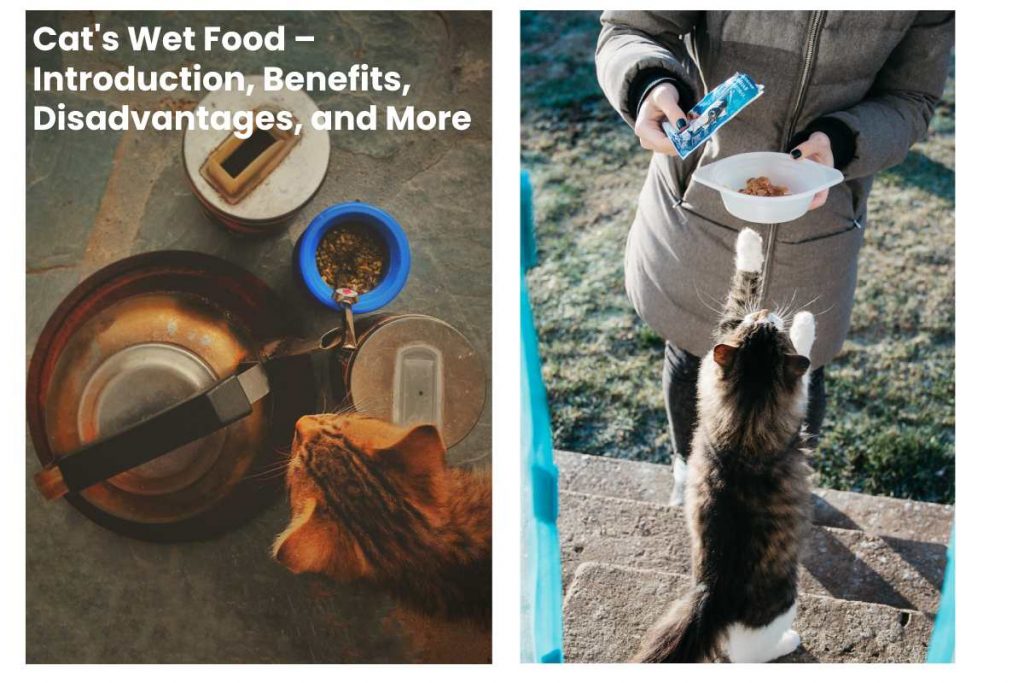Table of Contents
What is Cat’s Wet Food?
Cat’s Wet Food – The so-called wet food does not know its name for anything. Indeed, wet food is mainly composed of water and can reach up to 80% humidity.
Presented in cans, aluminium trays, or fresh pouches, wet cat food can take on many textures, such as jelly, pate, mousse, bite, or even terrine.
Cat’s Wet Food – What are the Benefits?
1 benefit of this type of food is undoubtedly its deliciousness. It easily seduces even the toughest cats. Some raucous tomes used to the smell of pate If you present them a bowl of croquettes, they will tell you of their displeasure.
Furthermore, since wet food has higher water content, it is more similar to the food of a wild cat, whose prey also has high humidity. Thus, it meets most of the water needs of the cat and further prevents dehydration and kidney problems of the cat.
Not only that, weight for pound, wet food contains far fewer calories than dry food, water being a zero-calorie drink by nature. It is therefore ideal for overweight Tomcats, as it fills them up more quickly.
Also be aware that older cats also appreciate this type of food, especially if they are suffering from teething problems. There is no need to work hard to absorb jellies and geese, which greatly facilitates their life.
Finally, wet food, which is often present in individual portions in trays or fresh pouches, has the advantage of being easy to give and completely dosed to meet your cat’s needs.
Cat’s Wet Food – What are the Disadvantages?
1 disadvantage of wet food is undoubtedly its preservation method. Once the box, bag, or tray has open and place in your cat’s bowl, the food is dry. To avoid any risk associated with bacterial growth, it spoils and should be thrown away if it spends more than two hours in the open air.
Likewise, wet food will easily attract flies, especially in the summer season, which won’t hesitate to land on it in no time. The risk, of course, is that they keep their larvae there, in turn being ingest.
Also, be aware that budget wet food is usually more expensive than dry food. Even if this logic should not be at the center of your food decision, it should still be taken into account.
Finally, the industrial mash can be irritating to owners who are sensitive to strong odors. And in general, wet food is more restrictive, as you will need to carefully clean your cat’s bowl after each feeding for impeccable hygiene.
So, What to Choose for your Cat, Wet or Dry Food?
Ultimately, both types of diets have their advantages and disadvantages. To date, no scientific consensus has establish, recommending only dry foods for wet foods or vice versa.
The most important thing is the quality you choose, especially keeping in mind that your cat’s diet should primarily consist of protein, as this is the par excellence of a carnivorous animal.
Knowing this, most veterinarians today recommend what is called “mix-feeding”, that is, alternating between pets and kibbles. For this why not provide your cat with kibble during the day and give him a fresh pouch every evening?
How many Times to Feed?
To feed your cat well, you must meet his needs and properly ration him with protein, fruits, vegetables, fiber, and vitamins. It is necessary to respect 60 to 80% raw meat, and about 10% vegetables and fruits. Lastly, don’t forget to bring 15 to 20% cooked fish and cooked meats such as rabbit, duck, lamb, and viscera.
Her diet should consist of at least 40% fat and 26% protein. Protein and fat requirements can vary depending on the age and activity of the cat. Your cat’s average amount of food per kilogram should be 30-50 grams. It is necessary to give rations several times, as cats feed several times a day.
Foods Poisonous for Your Cat
Foods to Avoid or Even Avoid to Maintain your Cat’s Health are:
spinach, mushrooms, turnips, potatoes, leeks, beets;
lentils, peas;
Onions, and garlic to avoid;
avocado, grapes;
Cow’s milk, raw egg, butter;
coffee, cocoa, tea;
anything containing sugar or counterfeit sugar;
Herbs and seasoned dishes.
Conclusion
Feeding your cat naturally can be a solution to increase its life expectancy. Cats, like humans and other living things, need to eat quality products and fresh ingredients. If you often choose kibble for your cat, it can be dangerous because of its poor quality. That’s why you need to be careful what you feed your pet. There are three ways to feed your cat: dry food, kibble, wet food, pâtés, and homemade food.
